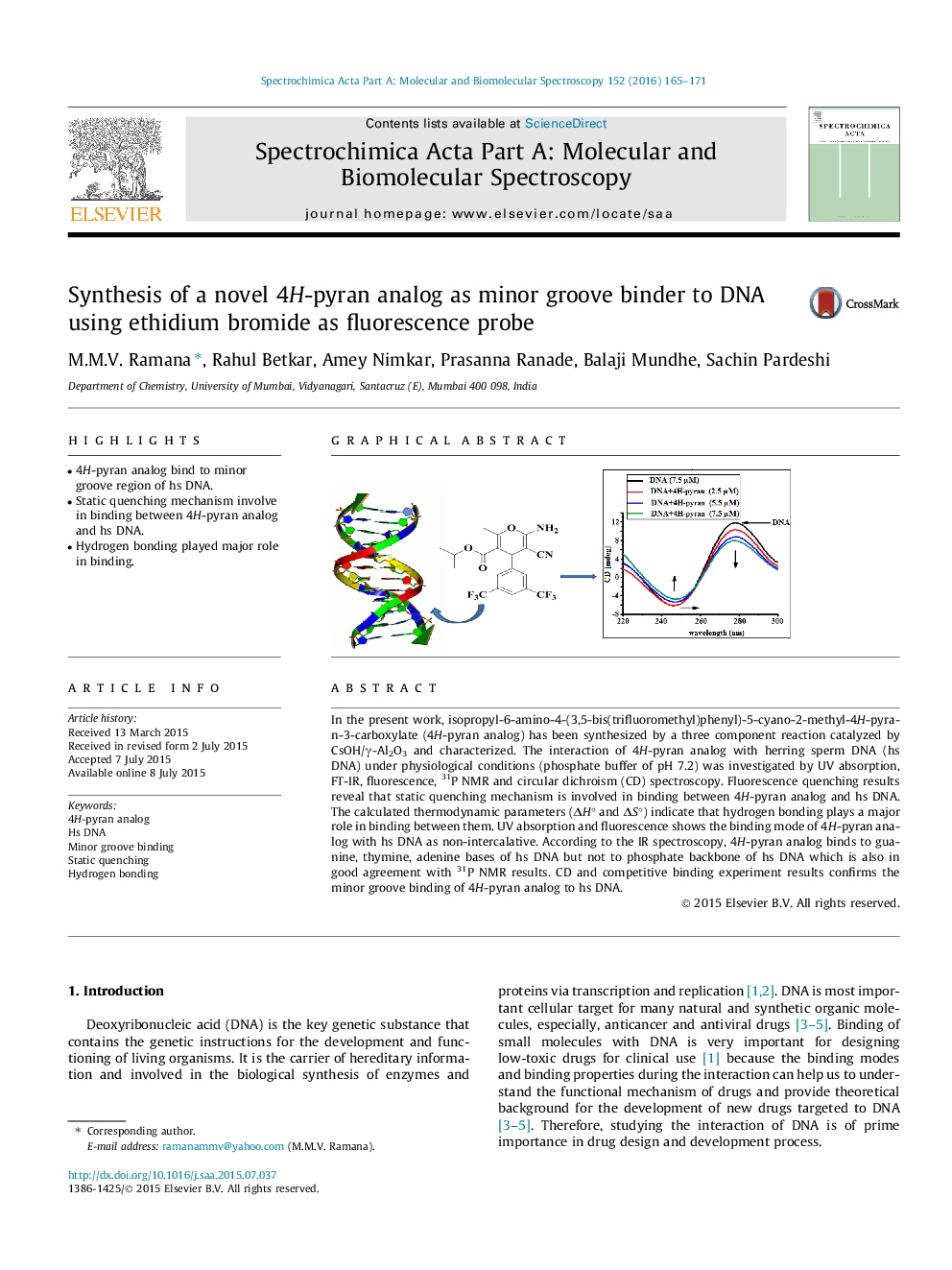| Article ID | Journal | Published Year | Pages | File Type |
|---|---|---|---|---|
| 1229760 | Spectrochimica Acta Part A: Molecular and Biomolecular Spectroscopy | 2016 | 7 Pages |
•4H-pyran analog bind to minor groove region of hs DNA.•Static quenching mechanism involve in binding between 4H-pyran analog and hs DNA.•Hydrogen bonding played major role in binding.
In the present work, isopropyl-6-amino-4-(3,5-bis(trifluoromethyl)phenyl)-5-cyano-2-methyl-4H-pyran-3-carboxylate (4H-pyran analog) has been synthesized by a three component reaction catalyzed by CsOH/γ-Al2O3 and characterized. The interaction of 4H-pyran analog with herring sperm DNA (hs DNA) under physiological conditions (phosphate buffer of pH 7.2) was investigated by UV absorption, FT-IR, fluorescence, 31P NMR and circular dichroism (CD) spectroscopy. Fluorescence quenching results reveal that static quenching mechanism is involved in binding between 4H-pyran analog and hs DNA. The calculated thermodynamic parameters (ΔH° and ΔS°) indicate that hydrogen bonding plays a major role in binding between them. UV absorption and fluorescence shows the binding mode of 4H-pyran analog with hs DNA as non-intercalative. According to the IR spectroscopy, 4H-pyran analog binds to guanine, thymine, adenine bases of hs DNA but not to phosphate backbone of hs DNA which is also in good agreement with 31P NMR results. CD and competitive binding experiment results confirms the minor groove binding of 4H-pyran analog to hs DNA.
Graphical abstractFigure optionsDownload full-size imageDownload as PowerPoint slide
